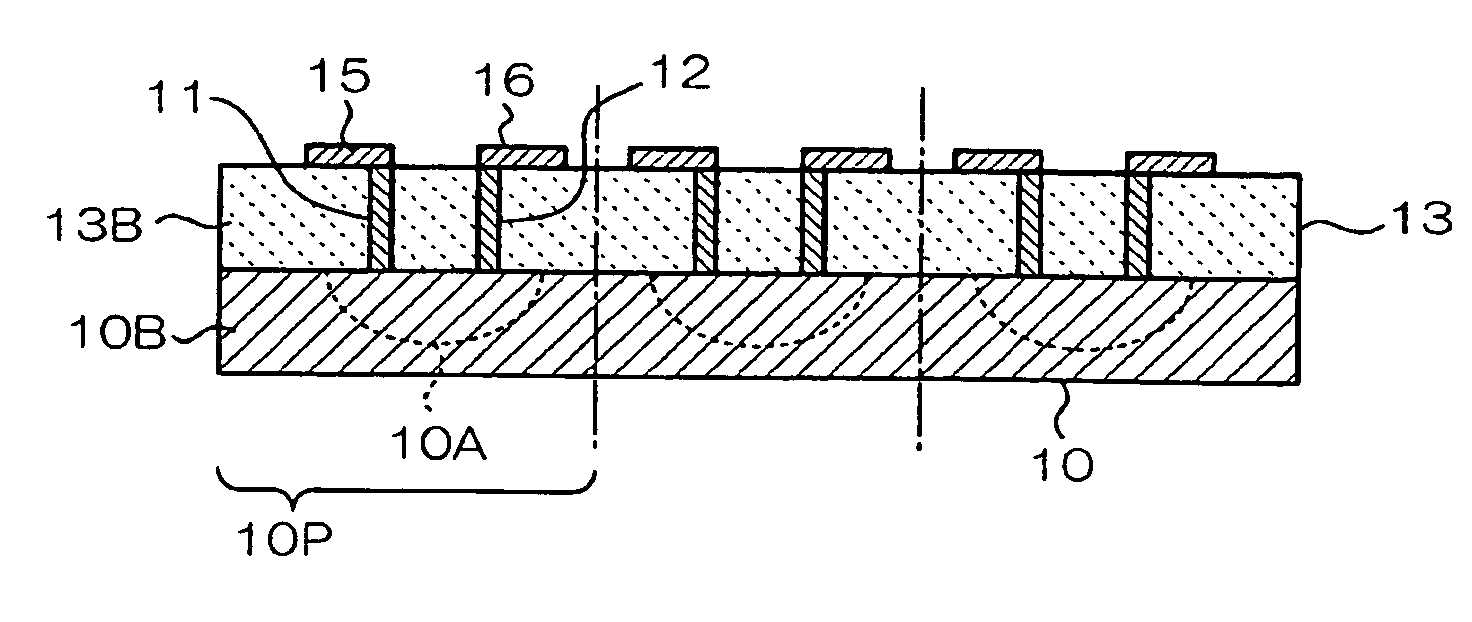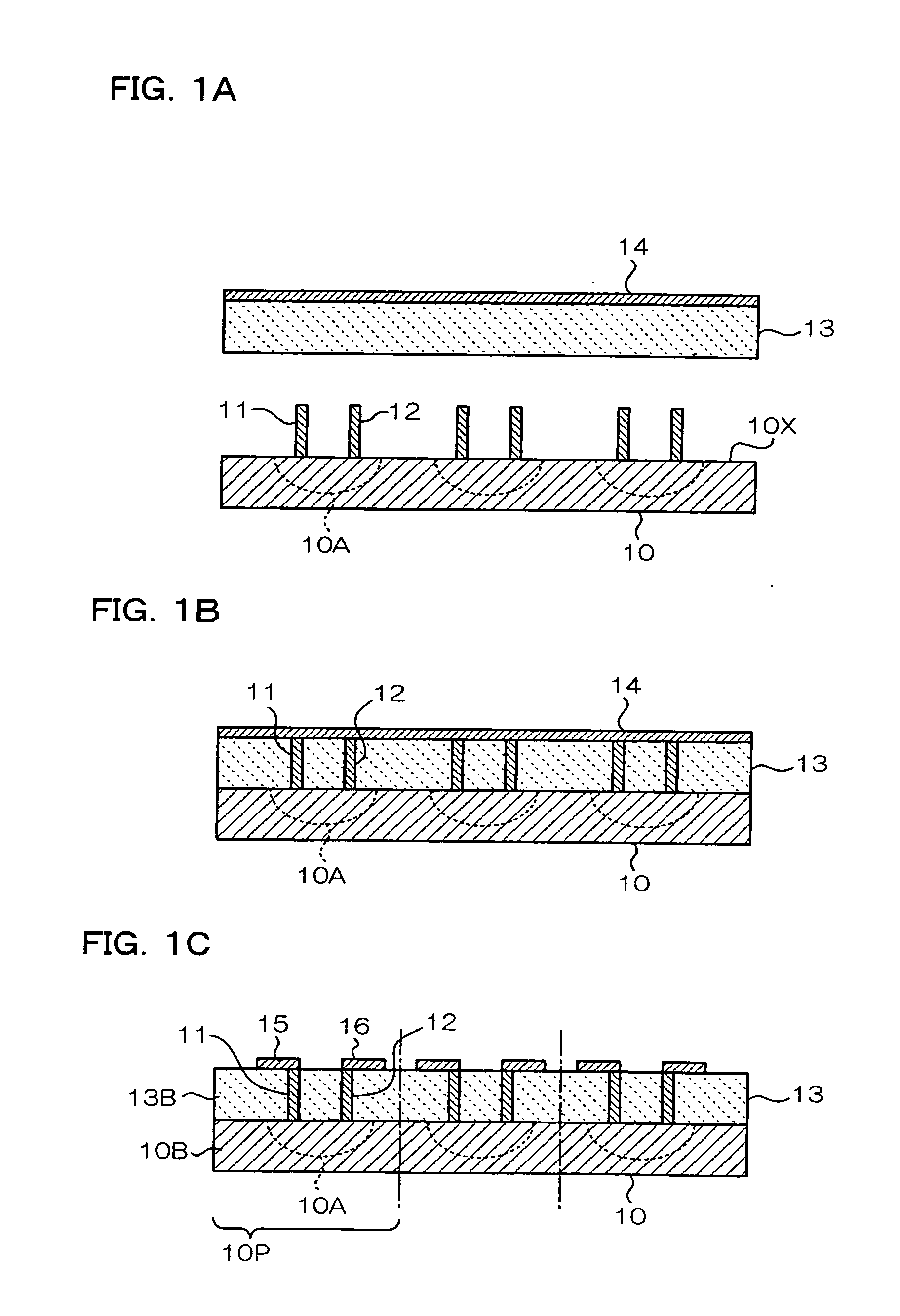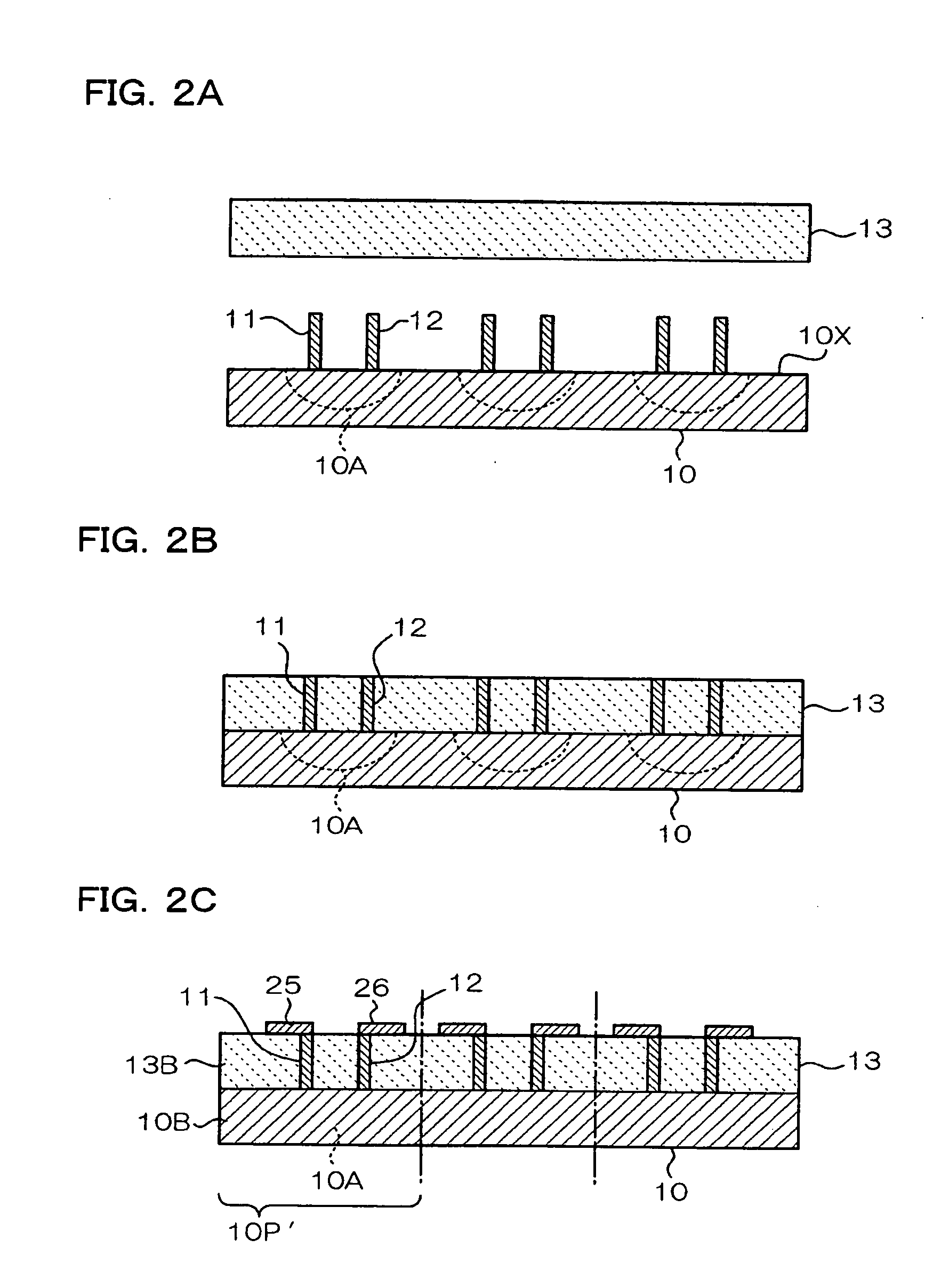Method of manufacturing electronic component, method of manufacturing electro-optical device, electronic component, and electro-optical device
a manufacturing method and technology of electronic components, applied in the direction of non-linear optics, radio frequency controlled devices, instruments, etc., can solve the problems of difficult alignment of bump electrodes of the ic chip and the conductive pads of the circuit board, increase the cost of acf, and take time to inject underfill resin
- Summary
- Abstract
- Description
- Claims
- Application Information
AI Technical Summary
Benefits of technology
Problems solved by technology
Method used
Image
Examples
first embodiment
[0098] First Embodiment
[0099] The first embodiment according to the present invention is described below with reference to FIGS. 1A to 1C. In this embodiment, as shown in FIG. 1A, a semiconductor substrate 10 integrally provided with a plurality of integrated circuits 10A is provided. The semiconductor substrate 10 may be a semiconductor substrate which is formed of a silicon single crystal, a compound semiconductor single crystal, or the like and includes a predetermined electronic circuit structure as the integrated circuit 10A. However, the semiconductor substrate 10 may be a ceramic substrate. The semiconductor substrate 10 is formed to a thickness of about 100 to 800 μm when the semiconductor substrate 10 is a semiconductor wafer, and is formed to a thickness of about 1 to 5 mm when the semiconductor substrate 10 is a ceramic stack.
[0100] In either case, the integrated circuits 10A are integrally formed in the semiconductor substrate 10. The integrated circuits 10A are arrange...
second embodiment
[0109] Second Embodiment
[0110] The second embodiment according to the present invention is described below with reference to FIGS. 2A to 2C and FIG. 6. In this embodiment, constituent elements the same as the constituent elements in the first embodiment are denoted by the same symbols. Description of these constituent elements is omitted. In this embodiment, as shown in FIG. 2A, the thermoplastic resin layer 13 is formed on the semiconductor substrate 10 by using the same method as in the first embodiment. However, in this embodiment, a conductor layer is not formed on the surface of the thermoplastic resin layer 13. As shown in FIG. 2B, in the step of forming the thermoplastic resin layer, the ends of the bump electrodes 11 and 12 are exposed from the surface of the thermoplastic resin layer 13 opposite to the semiconductor substrate 10.
[0111] As shown in FIG. 2C, conductors 25 and 26 are formed on the surface of the thermoplastic resin layer 13 so that the conductors 25 and 26 ar...
third embodiment
[0123] Third Embodiment
[0124] The third embodiment according to the present invention is described below with reference to FIGS. 4A to 4C. In this embodiment, constituent elements the same as the constituent elements in the first embodiment or the second embodiment are denoted by the same symbols. Description of these constituent elements is omitted.
[0125] In this embodiment, a thermoplastic resin layer is formed on the mounting surface 10X of the semiconductor substrate 10 by molding. In more detail, the semiconductor substrate 10 is placed in a die so that a cavity C is disposed on the mounting surface 10X of the semiconductor substrate 10 as indicated by one-dot lines shown in FIG. 4A, and a molten resin is injected into the cavity C as indicated by the arrow by using an injection molding machine (not shown) or the like. The injected resin is cured due to a decrease in the temperature inside the die, whereby a thermoplastic resin layer 23 shown in FIG. 4B is formed.
[0126] In th...
PUM
| Property | Measurement | Unit |
|---|---|---|
| thickness | aaaaa | aaaaa |
| thickness | aaaaa | aaaaa |
| diameter | aaaaa | aaaaa |
Abstract
Description
Claims
Application Information
 Login to View More
Login to View More - R&D
- Intellectual Property
- Life Sciences
- Materials
- Tech Scout
- Unparalleled Data Quality
- Higher Quality Content
- 60% Fewer Hallucinations
Browse by: Latest US Patents, China's latest patents, Technical Efficacy Thesaurus, Application Domain, Technology Topic, Popular Technical Reports.
© 2025 PatSnap. All rights reserved.Legal|Privacy policy|Modern Slavery Act Transparency Statement|Sitemap|About US| Contact US: help@patsnap.com



